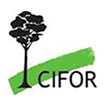Perennial woody crops—that is, those with a life cycle of at least three years, such as coffee, cocoa, grapevines, olive trees and oil palm—span about 183 million hectares across the planet, produce about a gigaton of food per year and are critical to diets and economies across the globe.
Right now, the intensified monocultural cultivation of these crops frequently contributes to environmental degradation and deforestation, leading to biodiversity loss and exacerbating climate change.
But, as an international team of scientists says in a just-published Perspective piece in the journal Nature Sustainability, such crops—effectively managed and incentivized—could be a key part of the solution to current sustainable development challenges.
“Perennial crops hold significant potential that must be harnessed to contribute to climate change mitigation efforts such as REDD+ [the UNFCCC effort to reduce emissions from deforestation and forest degradation; and conservation, sustainable management of forests and enhancement of forest carbon stocks in developing countries] and achieve the Sustainable Development Goals (SDGs),” said Denis J. Sonwa, the director of research, data and impact (RDI) at World Resources Institute (WRI) Africa, former senior scientist at the Center for International Forestry Research and World Agroforestry (CIFOR-ICRAF), and a co-author of the piece.
“They are an essential part of the solution in the global agenda and deserve more attention than they have so far received.”
Because they stay in the ground over long periods of time—often with a multi-layered, forest-like structure, extensive root systems, and abundant litter—perennial crops such as cocoa agroforests can provide a relatively stable habitat that supports high levels of biodiversity. For instance, cocoa agroforestry systems can host around 200 other tree species and exceed forests in bird diversity.
Perennial crops can also serve as wildlife corridors and buffers for protected areas. What’s more, since perennial crops tend to be less mechanized than their annual counterparts—especially when part of complex systems like agroforestry—they can provide crucial employment opportunities for people in rural communities, alongside shoring up food security, stashing carbon and helping to boost nutritional diversity.
However, making the most of perennial crops’ sustainable development potential will require increased policy and research focus on these crops and what they have to offer. “With a few exceptions, perennial cropping systems have received limited attention within the global agricultural policy framework,” the researchers say: in that context, annual crops—particularly wheat, maize and rice—remain stubbornly in the spotlight.

A worker loading oil palm fruit onto a truck in Sabah, Malaysia. Photo by Greg Girard / CIFOR-ICRAF
The authors posit three priorities for policy development in this area: regulation and economic incentives to encourage biodiversity-positive management practices; stricter regional land-use planning alongside international trade regulation efforts for some perennial crops grown in tropical biodiversity hotspots (e.g., cocoa, coffee and oil palm); and a holistic, multidimensional approach that integrates tools across the food chain into policy design.
They also state that more research is needed to understand the socio-economic and ecological dimensions of perennial crops and to tease out precisely “how to maximize benefits in some components (for example, farmer profitability or rural development) without compromising others (such as biodiversity conservation).” For instance, recent research in the Congo Basin found a link between higher incomes from cocoa and increased risk of deforestation, suggesting the need for zoning and incentives to combat this effect.
Key aspects requiring further research include building an integrated understanding of crop production’s social, economic and ecological dimensions; finding out how potential solutions at small scales might work at larger scales; and reflecting society-wide on the biodiversity impacts of consuming non-local and non-essential products.
To achieve the SDGs, the authors make the following three points: international trade agreements must focus on the entire supply chain; we must accept that each agricultural system has its particular problems and needs, and one policy will not fit them all; and policies cannot work in isolation from society and local communities. “Instead, a socio-cultural and economic context that facilitates the evolution and development of green and equitable policies should be fostered,” they state.

Rachel Olo and her family own a hectare of land producing over 800kgs of cocoa annually. Photo by Ollivier Girard / CIFOR-ICRAF
“For instance,” explained Sonwa, “perennial crops such as cocoa can play a vital role in climate change responses if their value chains are effectively structured through appropriate policies, institutional arrangements, and sound management practices from establishment to post-harvest.”
“These approaches, which include effective and efficient cocoa value chain management, can help mobilize local communities around sustainable forest-agricultural land use planning, mimic local forest structures and species through complex multistrata agroforestry systems, and contribute to carbon storage,” he said.
“Additionally, these cocoa agroforestry systems can provide multiple income sources—from cocoa, timber, and non-timber forest products, PES (Payment for Environmental Services)—which can enhance farmers’ livelihoods and serve as a source of resilience against various shocks, including climate change and variability,” Sonwa continued.
“Therefore, they can contribute to both climate change mitigation efforts (such as REDD+) and adaptation in the agricultural-forest landscapes of the tropics, such as the Congo Basin.”
Acknowledgements
Sonwa’s contribution to this study was made possible by financial support from NORAD for the CIFOR GCS-REDD+ (Global Comparative Study on REDD+) project.
We want you to share Forests News content, which is licensed under Creative Commons Attribution-NonCommercial-ShareAlike 4.0 International (CC BY-NC-SA 4.0). This means you are free to redistribute our material for non-commercial purposes. All we ask is that you give Forests News appropriate credit and link to the original Forests News content, indicate if changes were made, and distribute your contributions under the same Creative Commons license. You must notify Forests News if you repost, reprint or reuse our materials by contacting forestsnews@cifor-icraf.org.













